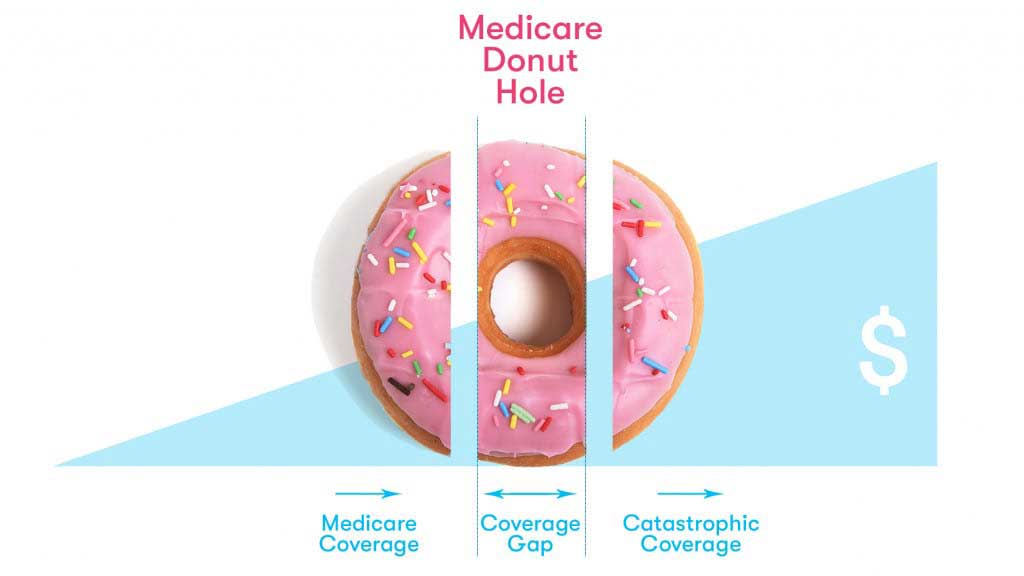
Medicare Part D was originally designed to cover the majority of a beneficiary’s prescription drug costs. Of course, each individual’s need for medication varies, so some people end up with prescription drug costs that exceed the limits of their Part D plan.
This situation creates a coverage gap for some beneficiaries, as they reach their annual coverage limits and then have to pay more out-of-pocket in the middle of the coverage year. This coverage gap is often called the “Part D Donut Hole”.
Medicare Part D Works in 4 Stages
To understand how the Donut Hole happens, you must learn how Part D coverage works each year. Coverage occurs across four stages, and you might fall into the Donut Hole depending upon how much of your coverage you use.
Stage One begins on January 1, the beginning of your coverage year. During this stage you are responsible for paying your prescription drug costs, up until you reach your plan deductible, which is $545 for 2024.
Stage Two begins when you’ve reached your deductible. At this point you are responsible only for co-pays each time you fill a prescription.
Stage Three begins when you and your plan (combined) have spent $5,030 (2024) on prescription drugs for the year (including the deductible). You’re now in the Donut Hole, and will pay a percentage toward each of your medications.
Stage Four of Part D coverage is known as Catastrophic Coverage. Once you spend up to a threshold of $8,000 for the year (2024), you move into this stage. Part D now covers 95 percent of the cost of your prescriptions, and you are responsible for just 5 percent.
Good News: The Donut Hole is Closing!
Before the Affordable Care Act passed in 2010, beneficiaries who fell into the coverage gap would be responsible for 100 percent of the cost of their prescription drug costs at that point in the coverage year. Since then, they have been reducing that percentage annually.
Now, Medicare beneficiaries are charged no more than 25 percent of the cost of brand name prescriptions when they fall into the gap. The percentage beneficiaries pay for generic drugs is capped at 37 percent, but of course we know that the overall cost of generics is often much lower anyway.
Congress is aware of the Donut Hole problem, and has already taken some steps to remedy the situation.
What Can Beneficiaries Do About the Donut Hole?
Even though the Donut Hole is shrinking, it is still a problem for some beneficiaries. Your Part D administrator will send you monthly statements to help you track your spending, so that you will know that you’re approaching the coverage gap.
Sometimes there is no way to avoid the Donut Hole completely, but beneficiaries can take steps to reduce their costs. Use generic medications whenever possible, and talk to your doctor about alternative medications that work just as well but are more cost-friendly.
Our licensed professionals will help you to better understand the Part D Donut Hole, work through any potential problems, and assist in managing your prescription drug costs.
- To speak with a licensed agent, call 818-570-3754
(TTY 711 M-F, 9am-5pm)
- CA: 0K41860
- 5850 Canoga Ave. Ste 400
Woodland Hills, CA 91367
Have You Watched Our Medicare Essentials Video Quick-Course?
This video tutorial covers the basic elements of Medicare in a format that is easy to understand and you can watch it from the comfort of home! It’s yours at no cost and no obligation, just tell us where we should send it!